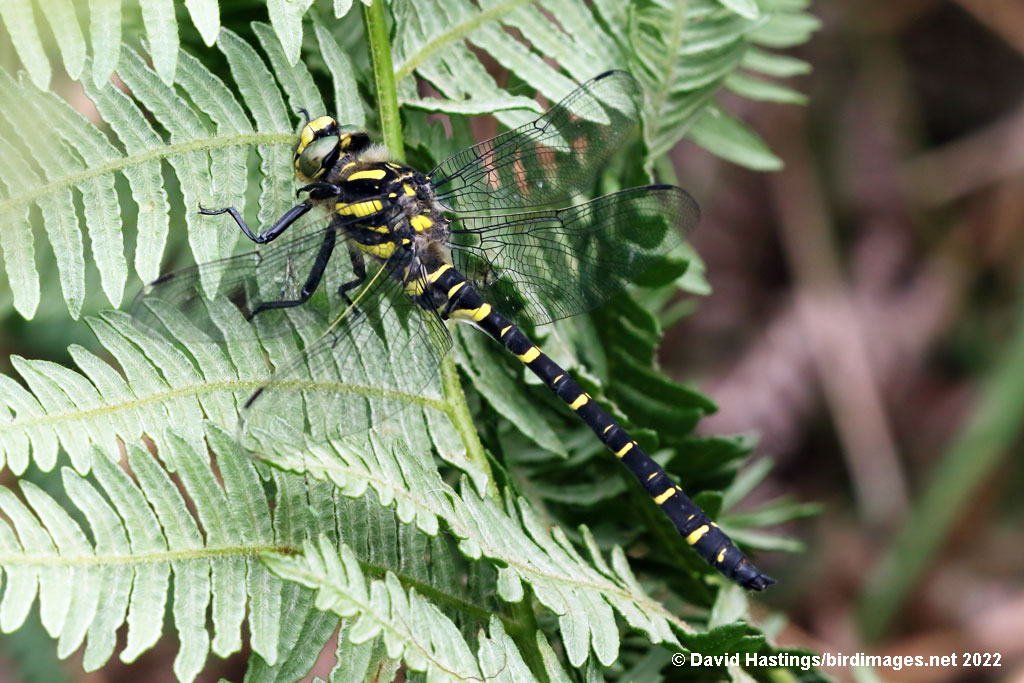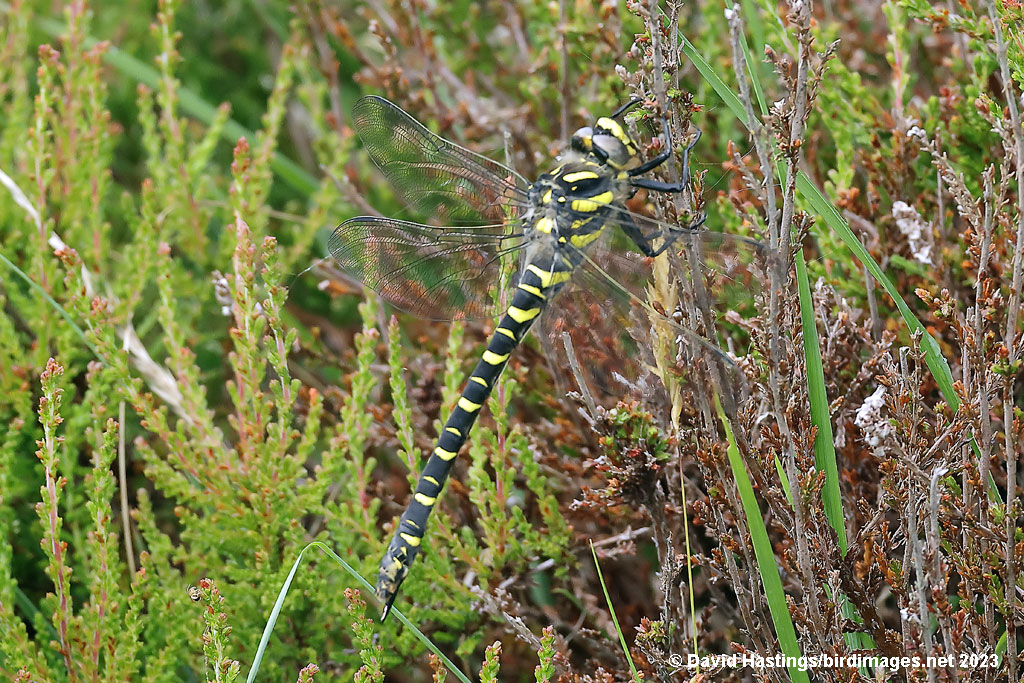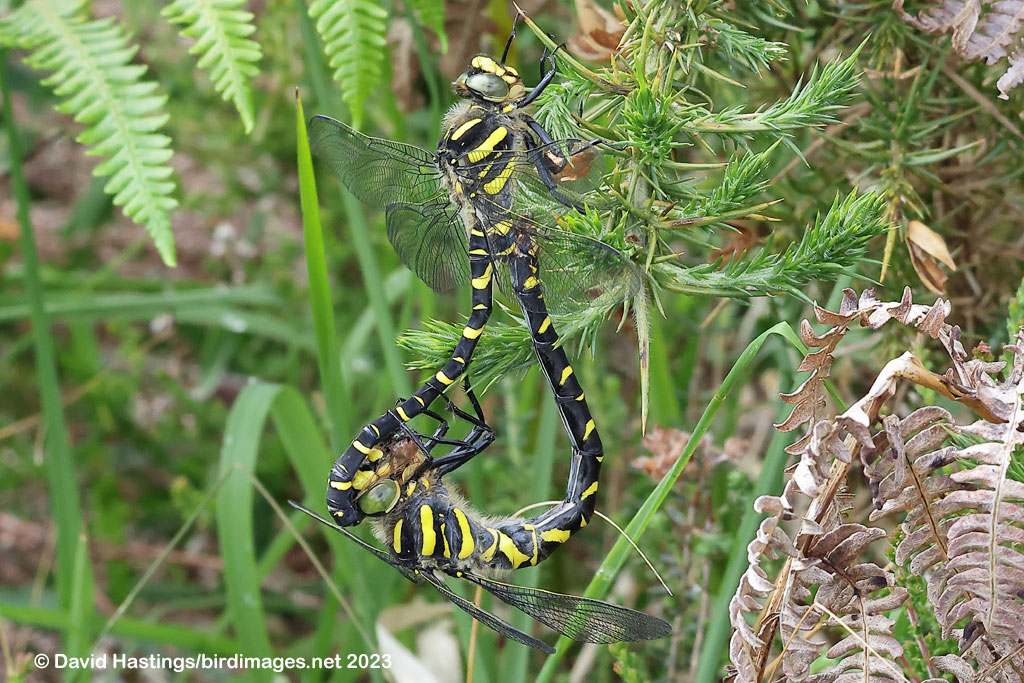Common Goldenring (Cordulegaster boltonii) | Species | ||||||||||||||||||||||||||||||||||||||||||||||||
Male. Taken at Wasdale, Cumbria, on June 24th 2018. (© David Hastings) (1/320th sec at f13. Click image for larger version) Male. Taken at Eskdale, Cumbria on June 21st 2022. (© David Hastings) (1/1000th sec at f11. Click image for larger version) Female. Taken at Haddon Hill, Somerset, on June 21st 2023. (© David Hastings) (1/640th sec at f11. Click image for larger version) Pair in cop. Taken at Haddon Hill, Somerset, on June 21st 2023. (© David Hastings) (1/640th sec at f13. Click image for larger version) DescriptionWingspan: 82 - 100 mm; Body length: 77 - 83 mm The Common Goldenring is a distinctive, large and impressive dragonfly. The sexes are similar, with green eyes which meet at a single point. The thorax has black and yellow stripes, with tapering yellow antihumeral stripes. The abdomen is black, with alternate broad and narrow yellow rings. The wings have a yellow costa. The male's abdomen is slightly waisted at S3, and it is swollen at the tip. The female's abdomen doesn't have the waist at S3, but it does have a long ovipositor which extends straight out beyond S10. Immature specimens are similar to the adults, but have brown eyes. It is found in western England, Wales and Scotland, but is absent from Ireland. It favours streams and small rivers which have acidic running water, with sandy, silty or peaty bottom debris. The eggs are laid while the female jabs her ovipositor into the stream bed. The larvae live at the bottom of the watercourse, covered in debris, for 2-5 years. The flight period is June to September. The males are territorial, and patrol up and down suitable breeding waters, their slow flight being interspersed with frequent hovering. Adults often hunt away from the breeding sites, such as amongst bracken, heather and gorse. A common and widespread species in western Britain, very local elsewhere. Earliest UK sighting: 18th June ; Latest UK sighting: 16th July Sightings
| |||||||||||||||||||||||||||||||||||||||||||||||||




